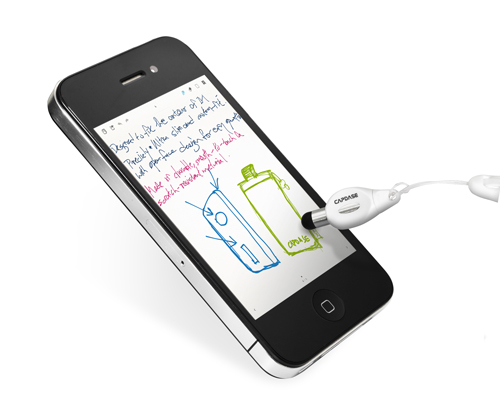
Steve Jobs once said that if a tablet required a stylus, those responsible for its design had failed.
But for those who like to draw or use handwriting recognition software, or who live in cold climes where gloves are a good idea, the humble stylus remains an indispensible tool. Capdase have two offerings, the Penn and the Finga, both designed for Apple’s iPhone and iPad — and other touch devices.
Not so long ago, smartphone precursors like Palm’s handheld personal digital assistants all came with a stylus. It allowed for precision selection and created the market for handwriting recognition programs.
These days, with the exception of a handful of smartphones and Nintendo’s DS range of handheld gaming consoles, the index finger has all but replaced the stylus. But there is still a place for it, particularly as the ability to annotate and share screenshots from smartphones becomes more widespread and as designers take to tablet computers.
Capdase offers two styluses, the compact Finga and the larger Penn. The former is intended for use with a smartphone and the latter with a tablet, but both will work on either.
The Penn is a lightweight, fairly compact stylus with a rubberised tip that is both non-scratch and low friction. It has a clip on the rear for a page or pocket. The clip pulls out of the rear of the Penn to reveal a pin designed for ejecting the micro Sim tray found in the iPhone and iPad.
The Penn has a magnetic shaft so that it can rest on the bezel of an iPad 2 in between use, while turning the tablet’s screen off in the process.

The Finga, meanwhile, looks like someone chopped the tip and first inch off a Penn and added a three-sided grip and a detachable clip for tethering it to a key ring. The rear of the Finga can also be removed to reveal a micro Sim tray pin.
The rear of the Finga is held in place with a strong magnet, which makes the detachable strap somewhat redundant as one could just as easily pull the end off rather than use the clip on the strap.
In the case of both the Finga and the Penn, a small amount of pressure is required to make a selection, and there’s a bit of give in the tip of each to allow for this. There’s also an almost imperceptible delay. This means the styluses lack the immediacy of using a finger, but the delay is minimal and doesn’t seem to be a problem when using writing or drawing applications.
In fact, it’s when using writing applications such as Penultimate or WritePad, or drawing ones such Sketchbook Pro or iDraw, that the Capdase styluses really shine. In these apps, there is no lag at all and the precision that the styluses allow make using a finger feel like writing with a Vienna sausage.
Being a bit larger the Penn is better suited to tablets while the compact Finga is perfect for a smartphone screen. As both work with either it really comes down to personal preference and what sort of device you intend using.
The Capdase Penn Stylus retails for R179 and the Finga for R139. — Craig Wilson, TechCentral
- Subscribe to our free daily newsletter
- Follow us on Twitter or on Facebook
- Visit our sister website, SportsCentral (still in beta)

